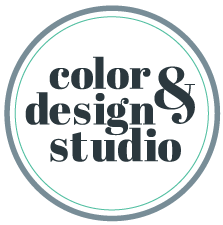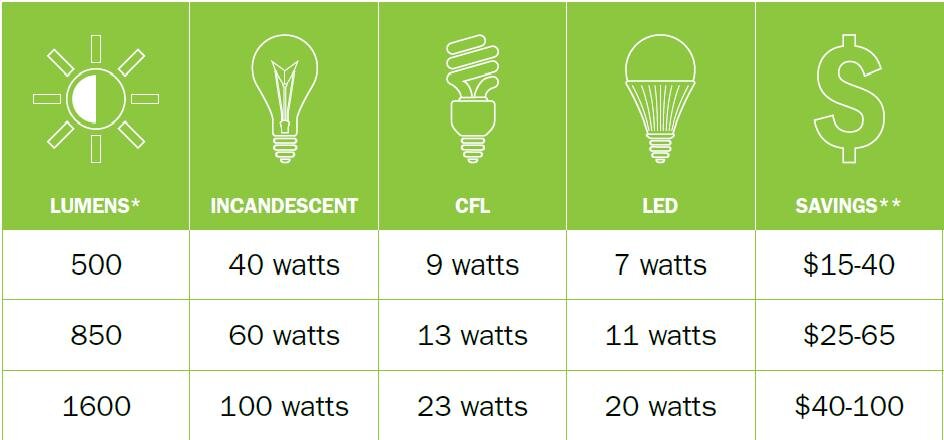Everything you ever wanted to know about light bulbs.
1. Types of Lightbulbs
Each light bulb has its pros and cons and certain bulbs work better in different spaces of a home. There are environmental and cost concerns around purchasing light bulbs too! When did this get so complicated?
LED
Stands for “light-emitting diode,” a technology that is long-lasting and extremely energy-efficient though they’re not ready to supplant all other bulbs yet. For one, they provide only directional light, not diffused light, making them ideal for task lighting, but not as great for general room illumination.
Incandescent
Are the most commonly used light bulbs and usually the least expensive. This type of light has a warm, inviting quality, is complimentary to skin tones and psychologically appealing. Incandescent bulbs usually last between 700 to 1,000 hours and can be used with a dimmer; however, they’re not as energy efficient as other options.
Halogen
bulbs are a variation of incandescent. They give the closest approximation of natural daylight, known as “white light.” Colors appear sharper under halogen light and the bulbs can be dimmed. They are slightly more energy efficient than incandescent bulbs, but are more expensive and burn at a higher temperature. Most often halogen bulbs are used for under-cabinet lighting, pendant lights and recessed cans. Remember not to use bare hands when changing the halogen bulb. The smallest residue of oil from a human hand can rub off on the bulb, creating an atmosphere where the bulb warms too quickly when the lamp is turned on, which can cause the bulb to explode.
Fluorescent
lighting gives a flat, ‘cold’ light which appears blue and harsh. It is a daylight-equivalent and cannot be put on a dimmer. There are many types of fluorescents on the market: warm ones, cool ones and special-colored ones. They typically produce more light and last longer than incandescent. Fluorescent bulbs work well to light large areas like basements or attics but do not provide natural looking light.
Compact Fluorescent (CFL)
(CFLs) consume a quarter of the energy that incandescent bulbs do and last 10 times longer. Unlike the old fluorescent lights, CFLs are quiet, instant-on and have warmer, color-corrected tones. They can be used anywhere you would use an incandescent light bulb. CFLs contain trace amounts of mercury, a harmful substance. Although the bulbs contain far less mercury than other household items, care needs to be taken to prevent breakage. Also, when CFLs burn out, they should be recycled.
What is an Edison Bulb?
Edison light bulbs are reproduction bulbs which are made to look like the first light bulbs introduced by Thomas Edison over 100 years ago. They are incandescent bulbs with filaments and lens (Glass) which are shaped like the original Edison bulbs.
2. Brightness of Lightbulbs aka Lumens
In simple terms, Lumens (denoted by lm) are a measure of the total amount of visible light (to the human eye) from a lamp or light source. The higher the lumen rating the “brighter” the lamp will appear. We have all bought 50W or 60W conventional bulbs or spotlights in the past expecting a certain level of brightness.
Lumens
How many Lumens do you need? Check out this great Lumens conversion chart from Seattle City Light
from https://powerlines.seattle.gov/2013/04/30/quick-tips-for-finding-the-right-light-bulb/
3. Color temperature in lightbulbs is called Kelvins
Light bulb color temperature is represented in the unit of absolute temperature, Kelvin, noted by the symbol K. Household fixtures are commonly found in color temperatures on the Kelvin scale of 2700K (warm incandescent), 3000K (warm white halogen) and 3500K (household fluorescent).
Color temperatures higher than 3500K are typically used for commercial and hospital applications, as the light is bright and has a bluish daylight cast that can be harsh for home interiors; but task lighting may be useful at 4000K and above. When selecting new lighting for your home, be sure to take its color temperature into account to ensure you’re making the right choice.
Aside from the type of the light bulb itself, using Kelvin temperature can also help guide you in determining which fixture is right for each room.
Whether you need an ambient source of light or one for highly-focused task lighting, keep in mind the following Kelvin ranges:
Kelvin Scale for Visual Warmth
Less than 2000K: gives off a dim glow of light, similar to what you might find from candlelight; best for low-light areas where ambient illumination is welcomed
2000K-3000K: gives off a soft white glow, often yellow in appearance; best for living rooms, dining rooms, bedrooms and outdoor spaces
3100K-4500K: gives off a bright amount of white light; best for kitchens, offices, work spaces and vanities where task lighting is needed
4600K-6500K: gives off a bright amount of blue-white light, similar to that of daylight; best for display areas and work environments where very bright illumination is needed
6500K and up: gives off a bright bluish hue of light, often found in commercial locations; best for bright task lighting
4. Basic Shape Guide
https://www.ledwatcher.com/light-bulb-shapes-sizes-and-base-types-explained/



